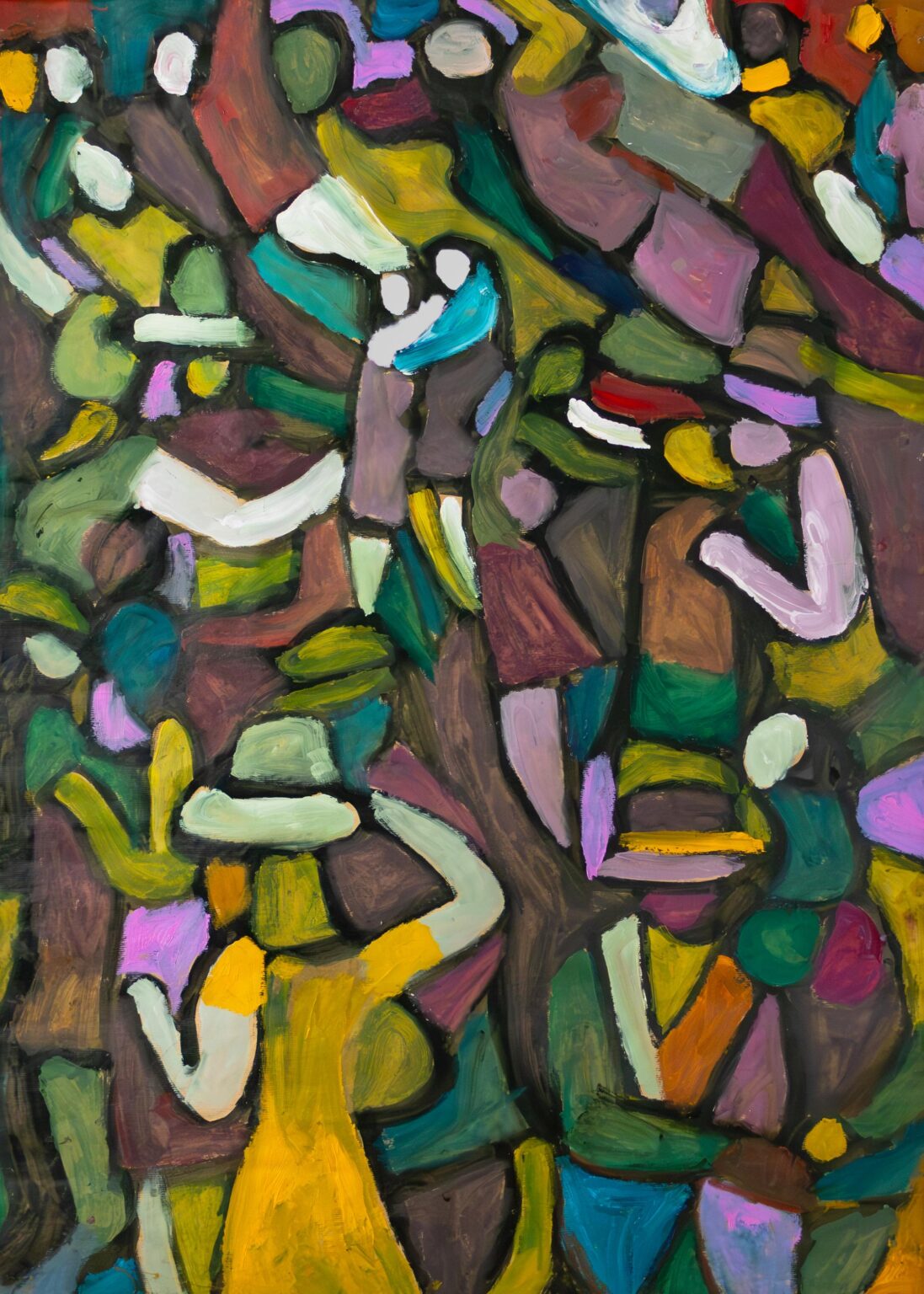
With Dancing Group, Miklós Németh links to the expressive–abstract figuration of the classical modern period and translates the motif of dance into a dense, rhythmic pictorial composition. The action unfolds without a fixed centre: from the surface there grows a compact fabric of figures and scenes in which the dance articulates itself in shifting constellations.
A meshed network of contours spreads across the image and forms a labyrinth of outline lines. These lines gather the paint into segmented, mosaic-like fields from which the figures crystallise. Depth modelling is abandoned in favour of a centreless order: the gaze finds no stable vanishing point but moves from edge to edge, as if following a choreography that extends beyond the individual figure.
The palette is muted yet vibrant: bottle green, violet, ochre and petrol, countered by white, turquoise, yellow and pink. Broad, impasto strokes meet shorter, impulsive marks; the colour fields press actively against the contour. Inspired by Adolf Hölzel, Németh takes up the thinking in colour-bounded fields and condenses it into a mobile, collective figuration.
Conceptually, dance becomes a model of social movement: individuals remain recognisable yet dissolve into a structure of impulses. This reveals a deliberate break with classical perspective and academic precision in favour of an intense, subjective pictorial language. Dancing Group thus offers no scene with a fixed focal point but an open structure in which the viewer picks up the beat and continually reorders the image as an open configuration.